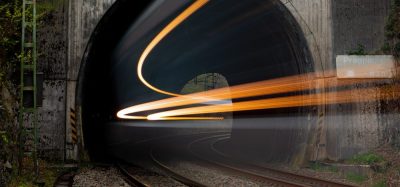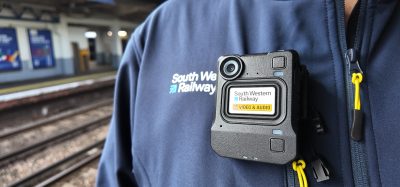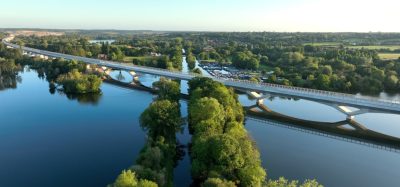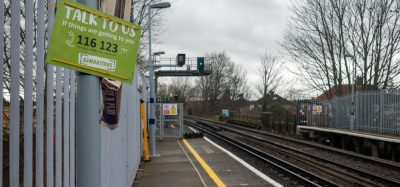Understanding the Norwegian challenges with climate change
Posted: 6 June 2007 | | No comments yet
In an interview for the Global Railway Review, Mr. Trond Børsting, a Civil Engineer in Construction at the Norwegian Technical School of Civil Engineering, explains that Jernbaneverket (the Norwegian National Rail Administration) will be placed under greater strain because the future is likely to bring increased precipitation which has forced them to conduct an extensive inventory of areas prone to landslides. Jernbaneverket is also working closely with the Norwegian Meteorological Institute to establish additional weather stations which will provide more reliable forecasts.
In an interview for the Global Railway Review, Mr. Trond Børsting, a Civil Engineer in Construction at the Norwegian Technical School of Civil Engineering, explains that Jernbaneverket (the Norwegian National Rail Administration) will be placed under greater strain because the future is likely to bring increased precipitation which has forced them to conduct an extensive inventory of areas prone to landslides. Jernbaneverket is also working closely with the Norwegian Meteorological Institute to establish additional weather stations which will provide more reliable forecasts.
In an interview for the Global Railway Review, Mr. Trond Børsting, a Civil Engineer in Construction at the Norwegian Technical School of Civil Engineering, explains that Jernbaneverket (the Norwegian National Rail Administration) will be placed under greater strain because the future is likely to bring increased precipitation which has forced them to conduct an extensive inventory of areas prone to landslides. Jernbaneverket is also working closely with the Norwegian Meteorological Institute to establish additional weather stations which will provide more reliable forecasts.
In recent years, Norwegian railways have suffered a number of bad landslides and derailments. Fortunately no lives were lost in these accidents, but they provided a reminder of how vulnerable the railway can be at the mercy of nature. It is impossible to guarantee that accidents will never happen, but Jernbaneverket is now devoting more resources to obtaining a better knowledge of ground conditions, landslide-prone areas and the consequences of increased precipitation.
Work started 2002
The process of examining possible preventive measures began back in 2002, when a number of landslides spurred Jernbaneverket into action. Over the past few years, a dedicated committee on landslides has formulated a series of measures, which Jernbaneverket is currently implementing.
Mr. Børsting, who chairs the committee said; “The committee on landslides coordinates Jernbaneverket’s activities at regional level in connection with the challenges we face in this area.”
He also explains that the committee includes a range of expertise, from railway engineers to specialists in geotechnology, geology and hydrology.
Regional readiness
Effective, knowledge-based emergency readiness is the key to many of the preventive measures. This is a regional responsibility involving track inspections and day-to-day operations and maintenance activities. This last category includes removing rocks from vulnerable areas and securing rock faces. As well as physical inspections and monitoring of the infrastructure and surrounding terrain, a step-by-step emergency plan has been drawn up, based on up-to-date weather reports.
“Our emergency plan has three stages: green, amber and red. On a green or amber alert, our preventive measures include increasing the number of inspections and possibly imposing speed restrictions on those sections of line at highest risk of landslide or washout. On a red alert, we close the line to all traffic. We don’t often resort to such action, but it has happened,” said Mr Børsting.
An extensive process of analysis underpins the measures already taken – and those due to be taken over the next few years. In a report to the Ministry of Transport and Communications, Jernbaneverket’s committee on landslides draws attention to the following potential consequences of extreme weather conditions in the future: More landslides and floods will cause more frequent and extensive line closures than at present. Climate change will make it less possible to predict landslides on the basis of historical data. What is more, previously installed protection may prove inadequate. In the future, it will be important to take account of changes in the frequency and nature of landslides when designing physical protection. Likewise, increased precipitation will require a whole new level of flood protection, and current drainage systems will have to be re-engineered for completely different conditions.
Mr Børsting comments, “All this knowledge provides a basis for Jernbaneverket’s future work in this area.”
Important experience
In addition to this new knowledge, Jernbaneverket possesses a wealth of knowledge accumulated through experience. For instance, there is a high probability of a landslide if an area has received more than 8% of its normal annual rainfall in a 24-hour period, or more than 5% of the annual norm in a 12-hour period. The consequences can be serious. In December 1998, part of an embankment at Mosjøen on the Nordland line was washed out following a violent storm with heavy downpours. Several cars of a passenger train derailed, but fortunately there were no serious injuries. In January 2002, storms and heavy downpours caused a number of landslides and washouts, damaging the fabric of the rail network in no fewer than 30 locations. This led Jernbaneverket to shift its focus from the consequences to the risks. Several further incidents over the past few years have served as a reminder of the importance of preventing landslides.
Consulting the best experts
The key players consulted by Jernbaneverket in its efforts to gather the necessary information are the Norwegian Geotechnical Institute (NGI), the Geological Survey of Norway (NGU), the Norwegian Water Resources and Energy Directorate (NVE), the Public Roads Administration and the Norwegian Meteorological Institute. In the last-named case, Jernbaneverket has signed an extensive cooperation agreement with the Institute.
“We currently have around 25 good weather stations around the rail network,” explains Mr Børsting. “Under the new agreement, we are going to build 15 new weather stations each year for the next three years.” Jernbaneverket is to fund the weather stations, but the Meteorological Institute will be responsible for building them.
In an interview for Jernbaneverket’s in-house magazine at the time that the agreement with the Meteorological Institute was signed on 20 December 2006, Jernbaneverket’s Director General, Steinar Killi commented that, “Weather forecasts and data are increasingly important to the safe and punctual operation of train services.”
Action in 2007
Although the inventory of landslide-prone areas and the implementation of physical preventive measures will continue over a 10-year period (assuming that Jernbaneverket is granted sufficient resources), work is already well under way. This year, landslide prevention work will take place on all long distance routes: Bergensbanen (Oslo–Bergen), Dovrebanen (Oslo–Trondheim), Nordlandsbanen (Trondheim–Bodø) and Sørlandsbanen (Oslo–Stavanger). All these lines traverse mountainous terrain. The main preventive measures comprise conventional securing of rock faces (removing loose rocks, bolting and affixing nets), removing vegetation and other build-up from lineside drainage installations, and widening cuttings.
Landslides in Norway – the facts
Owing to topography and weather conditions, large parts of the Norwegian rail network are highly vulnerable to landslides and avalanches of various kinds. These can be categorized as follows:
Rockslides and rockfalls
Rockslides and rockfalls are placed in the same category because there are many similarities in form and movement. The term rockfall is often used to describe a minor rockslide. Usually individual rocks become loose, but sometimes larger blocks of rock do so. Water and ice are the usual causes, and the phenomenon occurs most frequently in spring – during periods of mild weather and frost – or in the wet autumn months.
Avalanches
Avalanches can occur with both densely packed and loose snow. However, there is no risk of avalanche on gradients steeper than 55–60 degrees, where snow will not settle. There are three main types of avalanche:
- Point avalanche:
Occurs in both dry and wet snow as a chain reaction when a small area of loose snow on the surface breaks free, picking up more loose snow to form a pear shape as it descends. The avalanche usually comes to rest at the foot of the incline where it started. The masses involved rarely exceed several hundred cubic metres, and this type of avalanche usually occurs on slopes with a gradient of 35–55 degrees. - Slab avalanche:
This involves slabs comprising one or more layers of snow. The slabs reach high speeds (measured at over 200 km/h), are very heavy and often pick up additional mass as they descend. The fracture zone is normally located in a weak layer of snow, and a rise in temperature increases the risk of a slab avalanche. This type of avalanche usually occurs on slopes with a gradient of 25–45 degrees. - Landslide:
This consists of soil and water. The volume of water determines whether it should be termed a landslide or a debris flow. Debris flows often originate when a stream overflows and picks up large amounts of matter. Landslides occur on most hillsides where there is loose matter and the slope is steeper than 30 degrees, often along overflowing watercourses.
Washouts
A washout is when the railway’s trackbed collapses. Streams and rivers may erode the embankment beneath the trackbed, eventually causing parts of it to give way.
Key preventive measures
Measures to prevent rock material from coming loose:
- Rock clearance
- Bolting, avalanche nets, concrete injection
- Snow fences
- Good drainage systems, correctly engineered to prevent water accumulation
Measures to prevent landslides from reaching the line:
- Embankments, fences and dams
Measures to prevent train collisions with landslides:
- Electronic landslide warning systems
- Reduced running speed on landslide-prone sections
- Track inspections
Measures to limit damage when trains collide with landslides:
- Ploughs on trains to clear minor rockfalls
- Check rails to prevent derailment
- Seatbelts to prevent passengers from being thrown forward in the event of an emergency stop
Other measures:
- Flood alerts
- Rerouting lines away from sections prone to landslides
About the author
Mr. Trond Børsting is a Civil Engineer in Construction at the Norwegian Technical School of Civil Engineering and he chairs the landslide committee.
OUT NOW: The Definitive Guide to Rail’s Digital Future
The rail industry is undergoing a digital revolution, and you need to be ready. We have released our latest market report, “Track Insight: Digitalisation.”
This is not just another report; it’s your comprehensive guide to understanding and leveraging the profound technological shifts reshaping our industry. We move beyond the buzzwords to show you the tangible realities of AI, IoT, and advanced data analytics in rail.
Discover how to:
- Optimise operations and maintenance with real-time insights.
- Enhance passenger services through seamless, high-speed connectivity.
- Leverage technologies like LEO satellites to improve safety and efficiency.
Featuring expert analysis from leaders at Nomad Digital, Lucchini RS, Bentley Systems and more, this is a must-read for any rail professional.








